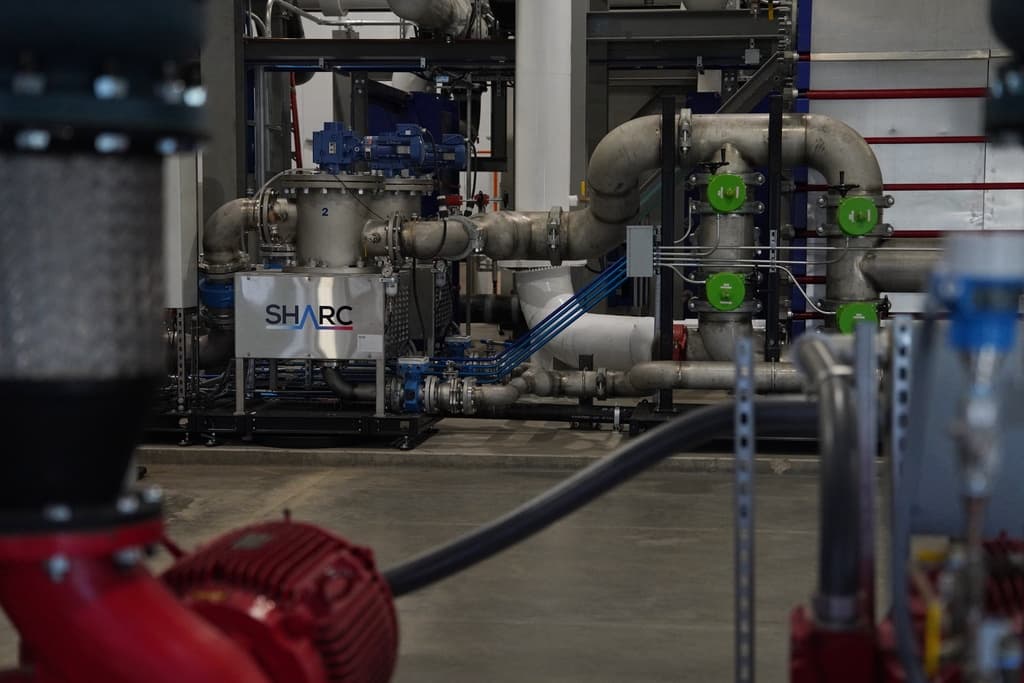
School superintendents rallied at the state Capitol Monday to ask lawmakers for more money for public schools next year. But lawmakers must first patch up this year’s state budget and some are proposing education cuts.
At first blush, it looks like a significant chunk of money already goes to Colorado's public schools: If the total state budget was 100 pennies, 43 of them go to Colorado’s school children.
But when you look at how much the state spends per student –Colorado ranks 42nd in the country, according to Education Week's Quality Counts 2016 report.

So why do superintendents want more money and what are lawmakers saying? Here are some answers:
So what exactly do school superintendents want?
A vast majority of them -- 167 out of 178 superintendents -- signed a statement asking lawmakers to not make cuts in this year’s school budget.

Boulder schools Superintendent Bruce Messinger says the budget crisis can’t be pushed off year after year because school children now need help.
"They get to be in first grade one time, they get to be in algebra one time, and so how well we prepare them while they’re with us – this is not a project we can wait a few years on," he said. "Our obligation is to educate the children now and provide resources."
But superintendents also don’t want an increase in the negative factor, which the governor is proposing. What is the negative factor?
The negative factor was a maneuver lawmakers created during the recession. It allowed them to cut about $1 billion a year from public schools. Last year was only the second time that lawmakers restored a small sliver of the $5 billion withheld from schools since 2010.
But the trend was short lived. This year, the governor is proposing a $50 million increase in the negative factor.
Why is he doing that?
Even though state revenues are growing now, they grew more slowly last year than lawmakers’ forecasts. So because of the Taxpayer's Bill of Rights, they now have to plug a $373 million deficit for the current budget year ending this July.
Lawmakers in Colorado don’t have the ability to raise taxes without first getting approval from voters, so they must cut. So increasing schools’ $5 billion shortfall is one way of plugging the deficit.
Another way: Gov. John Hickenlooper has proposed $20 million in cuts for higher education. If that goes through, tuition could rise by as much as 9 percent.
Taxpayers are also expecting a TABOR refund this year, right?
Yes. When state revenue exceeds the rate of inflation and population growth - tax refunds are triggered under TABOR.
This year, lawmakers are giving back $156 million. Some at the rally would prefer to ask voters if they can keep that money for schools.
Parent Shannon Bird says she tried to lobby her state legislator for more school funding now that the economy was improving.
"I was told it didn’t matter that the state was doing better," she said. "An improved economy would mean cuts would continue, and at the same time $10 and $15 refund checks would be sent out to our taxpayers."
So are state legislators on board with Hickenlooper's proposed cuts?
Some lawmakers say they don’t want to make the governor's proposed $50 million cut to the negative factor.
"I’m hopeful that we won’t have to make the $50 million cut to school funding," said Rep. Millie Hamner, chair of the main budget committee, last week at a legislative preview.
"But again, we have to have a balanced budget and there are $373 million of cuts on the table so if we don’t take it there, we have to figure out together where else we go to make the budget balance," she said.
Haven’t some school districts raised more tax dollars locally?
Yes, but Budget Committee member Rep. Bob Rankin says that’s not a solution for the whole state.
"That doesn’t work because two houses in Aspen are worth more than all the property in Costilla County so it’s a very inequitable system," he said last week. "So if we’re ever to go back to the Legislature and put substantially more money into education, we need a new model, we need to change we’re funding schools and we need to have a new vision."
But lawmakers are faced with a more immediate decision on school funding too?
Yes. Just before Christmas, figures came out showing school enrollment down but also -- school district property tax revenues are up. That means the state can send less to schools.
Lawmakers are now forced to make a choice: cut state spending for schools this year halfway through the school year – or save the cash and use the money for next year’s school budget.
Districts have fixed costs so most are desperate to have the state follow through on what it’s said it’ll give to schools.
Superintendents also asked for long-term solutions. So how does the state start to reverse the negative factor and not cut higher education funding over time?
There are a number of conflicting constitutional amendments voters have passed that make a simple solution impossible. A group of lawmakers will try again this year to set up a task force to look at inequities in school finance, how other states fund their schools, what tax policy is and isn’t working. A bill to do this was killed last year.
Is there any other education legislation worth keeping an eye on?
Yes. There'll be a bill to fund full-day kindergarten for all Colorado children. Right now, the state pays for half-day kindergarten.
This bill, which would require a two-thirds vote from each chamber, would send the full-day proposal to voters. It asks them to let lawmakers keep any money above the TABOR limit – and institute full-day kindergarten. If any money is left over, it would go toward helping pay down the $5 billion owed to schools.









